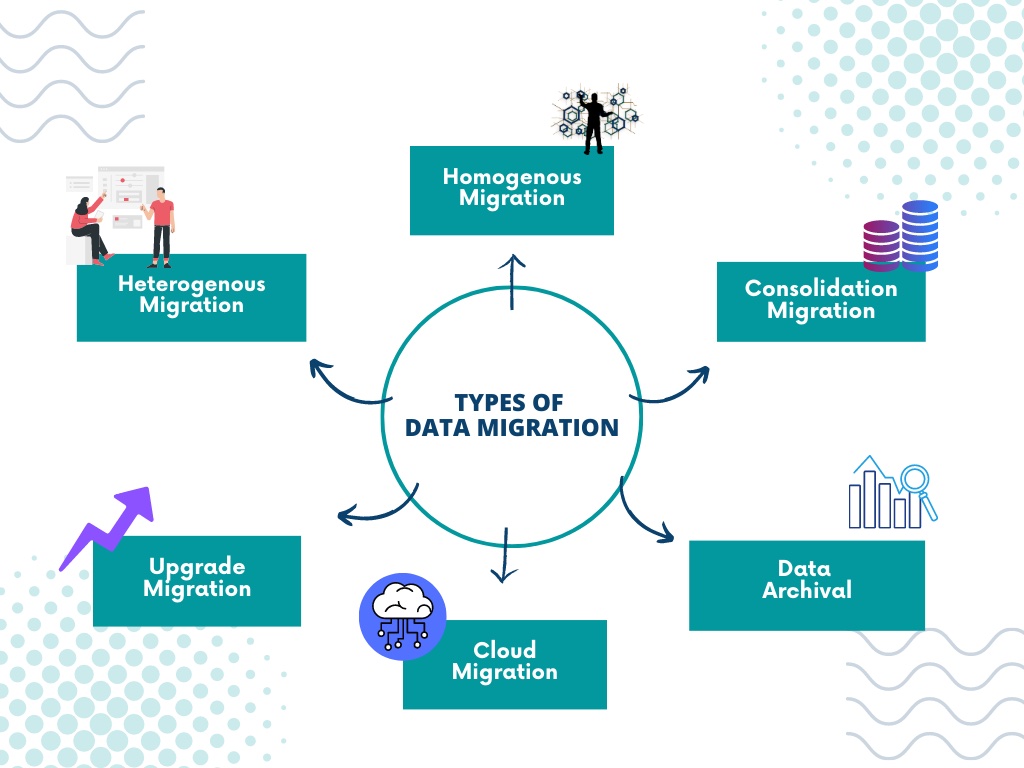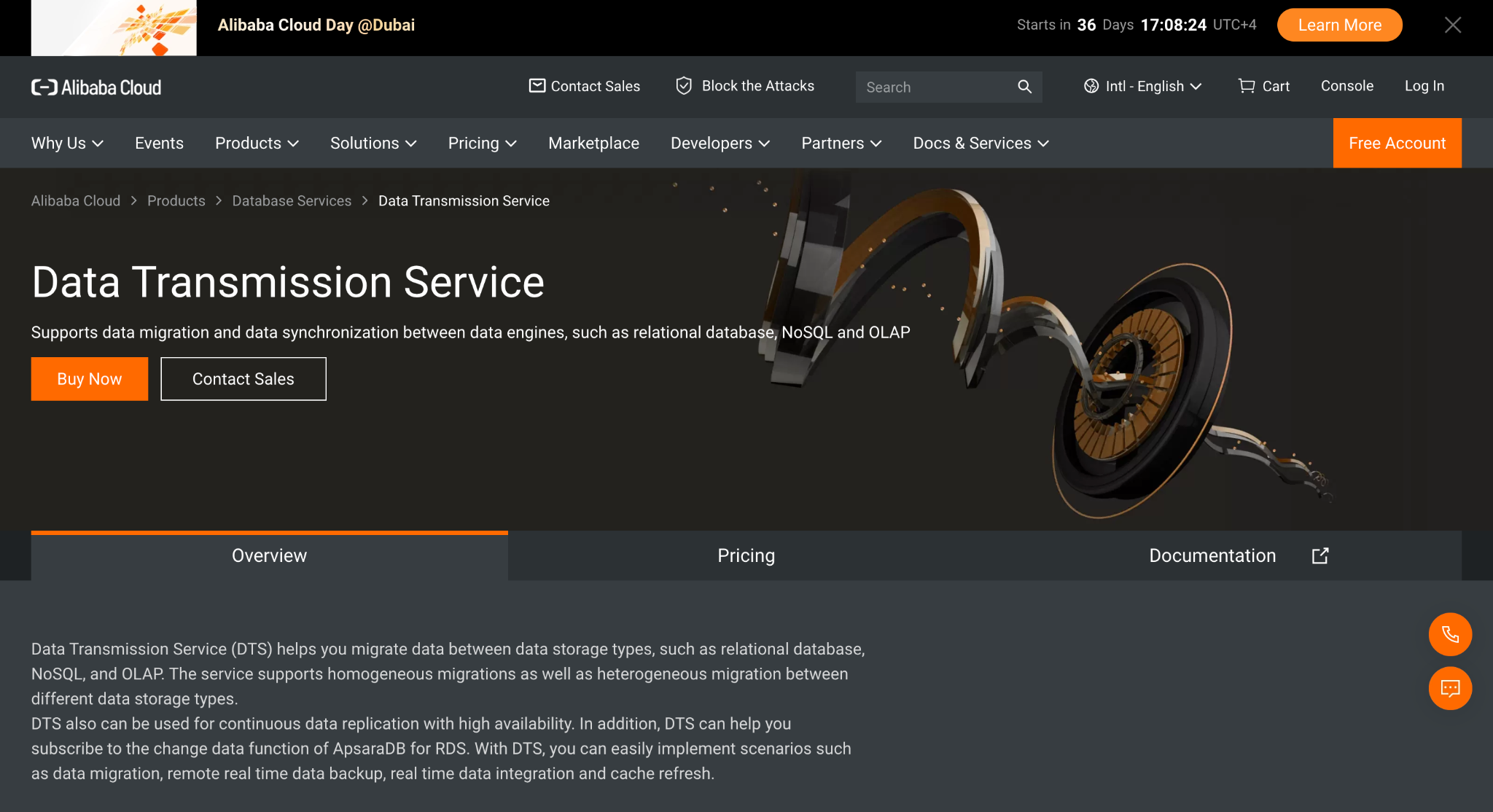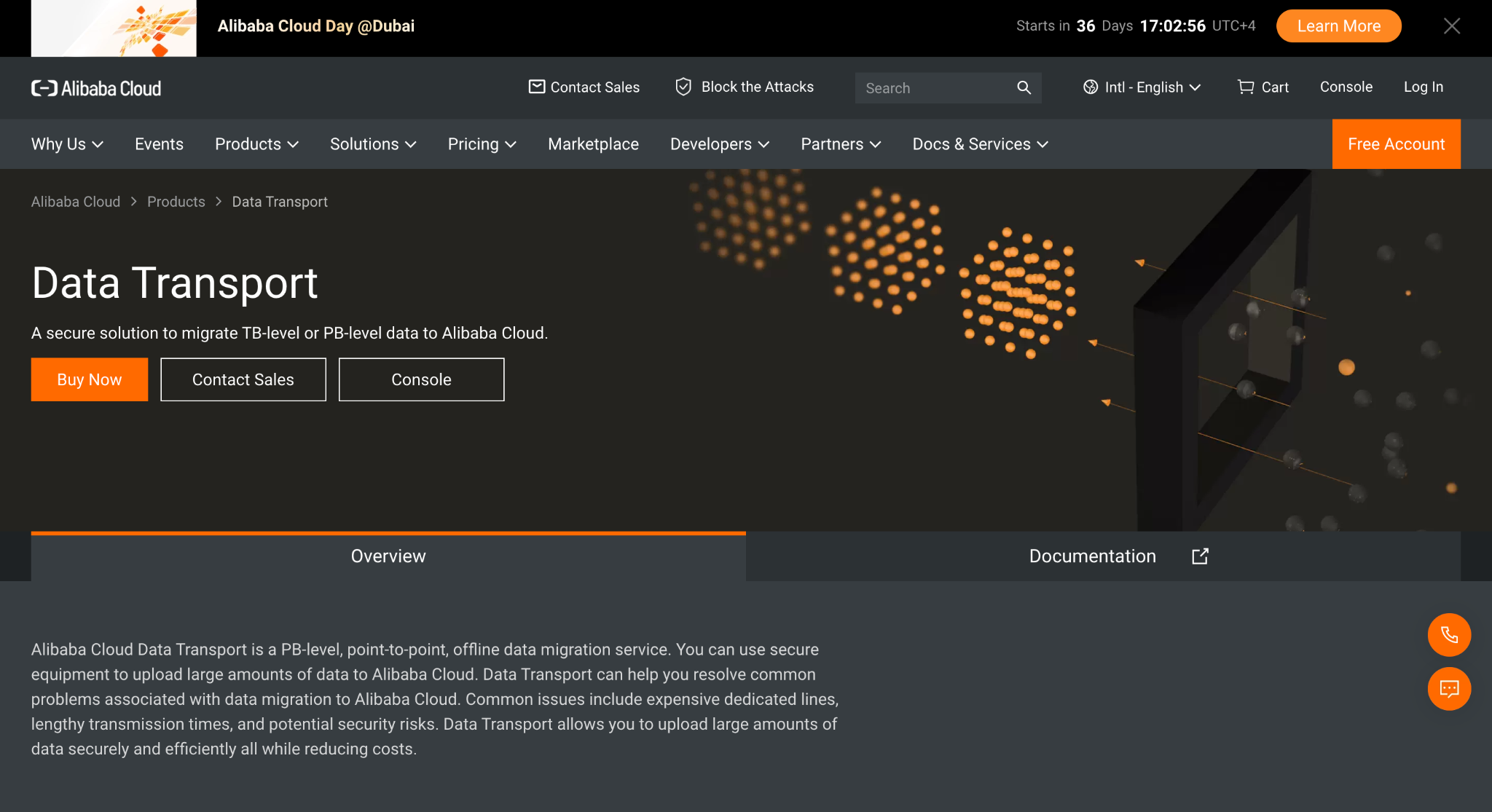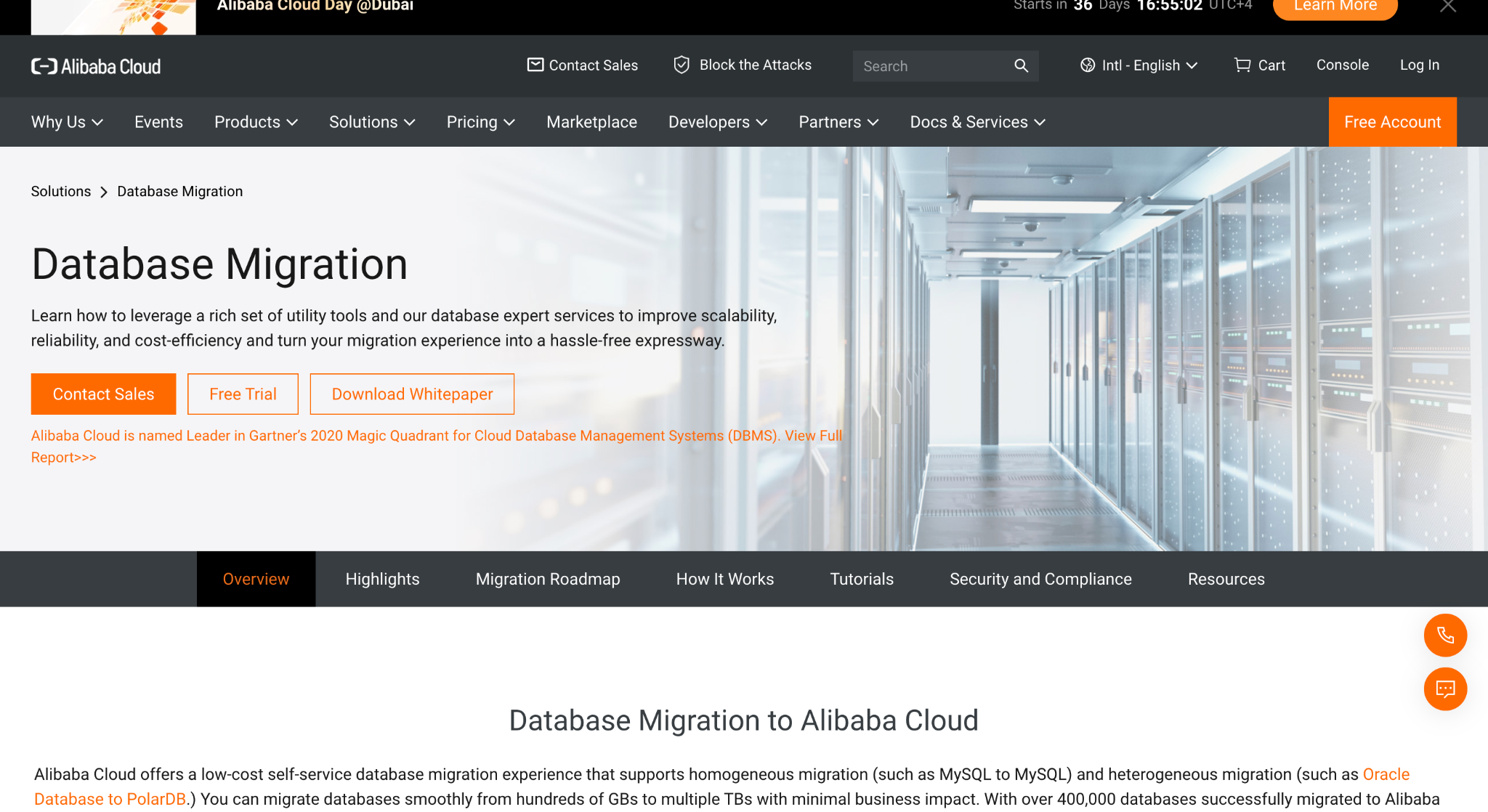You may have heard the term data migration, but what does it mean?
Data migration is a critical process for businesses of all sizes. Data migration is the process of transferring data from one system to another. It can be a daunting task or a smooth process with careful planning and execution.
This article explains different types of data migration, each process, the best practices to follow, and tools for easier data migration.
Whether you're a business owner, IT professional, or aspiring data scientist, this guide will provide valuable insights and practical tips to help navigate the world of data migration.
Data migration is the process of transferring data from one system to another. It can involve moving your data from an older or legacy system to a newer one or one from one environment (such as on-premises) to another (e.g., cloud computing).
Data migration also enables you to merge data from multiple sources into a single system and change the format or structure of the data. It's like spring cleaning for your digital assets - declutter and reorganize your data for more efficient use in the future!

Source: Shane Duggan
There are many different types of data migration. Each one has unique characteristics and associated challenges. Common types of data migration include:
Every type of data migration comes with its own set of demands and obstacles – so selecting the best approach depends on the nature of your project. Don't worry; you'll get there – one data step at a time!
Data migration is a vital process that enables organizations to move their data from one system to another without any data loss or disruption to business operations. It's a complex and multi-faceted process that requires careful planning, execution, and attention to detail.
The data migration process consists of six key steps:
Organizations can minimize the risks associated with data migration and ensure a smooth transition to their new system by following these steps and implementing best practices. It is also important to note that data migration is not a one-time event but an ongoing process, as data will continue to change over time.
Successful data migration requires careful preparation and planning to ensure the process runs smoothly without any data loss or disruption to business operations. It's essential to identify potential risks and develop strategies to mitigate them.
One of the key best practices for data migration is implementing a comprehensive backup strategy, which allows organizations to recover their data in case of any issues during the transfer process. Additionally, testing the extraction, transformation, and loading processes before implementing them on large datasets is critical for a smooth transition.
Furthermore, reviewing all existing policies related to data governance and compliance before executing the project is essential to ensure the success of the migration and compliance with industry regulations – a clear communication plan to keep stakeholders informed throughout the data migration process.
Finally, I recommend having a rollback plan if things don't go as planned. In summary, a comprehensive approach that covers all aspects of data migration (including risk management, testing, compliance, communication, and a backup plan) is crucial for successful data migration.
To achieve a seamless and successful data migration, having the right combination of processes and tools at your disposal is crucial. The abundance of options available on the market can make choosing the right tools overwhelming. However, specific tools have proven particularly effective in ensuring a smooth data migration process.

Alibaba Cloud Data Transmission Service (DTS) is an effective solution for data and application migration from on-premise or other cloud platforms to Alibaba Cloud.
Utilizing both online and offline migration capabilities, the tool provides users with options to migrate continuously with minimal disruption to business operations and a flexible choice of migration methods (such as block-level incremental and complete data migration).
Furthermore, with its support for data compression, encryption, and verification, Alibaba Cloud DTS ensures the secure transmission of sensitive data while also being compatible with most operating systems, databases, middleware, and applications. These features make it an ideal tool for organizations seeking a reliable and efficient way to migrate their applications and data to the cloud.

Alibaba Cloud Data Transport is a powerful data migration tool designed for organizations to transfer large volumes of data between different environments securely and quickly. With its support for near-instant real-time migration, Data Transport minimizes business disruption and delays in moving data to the cloud. This tool also provides a range of options for data sources and destinations and various types of data migration scenarios (such as homogeneous, heterogeneous, complete, or incremental migration).
Data Transport offers superior security and privacy features. It encrypts the data in transit and at rest, ensuring only authorized personnel can access confidential information. Besides providing secure access control, this tool allows users to monitor the migration process via a web-based console with detailed reports and analytics. Ultimately, Alibaba Cloud Data Transport is an efficient solution for organizations looking to move their data to the cloud without sacrificing speed or security.

Alibaba Cloud Data Migration is an easy-to-use data migration service designed to help organizations migrate data from various sources to Alibaba Cloud quickly and securely (such as on-premises databases, cloud databases, and other storage platforms). This service enables migration to ApsaraDB for RDS, AnalyticDB for PostgreSQL, AnalyticDB for MySQL, AnalyticDB for PPAS, and other cloud-native services.
Data Migration offers an array of features that ensure a smooth experience, including incremental migrations that only transfer new or modified data, automatic network bandwidth adjustments for faster transfers, complete migration with a backup option, and real-time replication between on-premises databases and Alibaba Cloud. Furthermore, the service supports data compression and encryption to protect sensitive information.
Alibaba Cloud Data Migration is a powerful yet easy-to-use solution that provides organizations with secure data migrations while minimizing time and cost consumption.
Data migration is crucial for organizations looking to upgrade or modernize their systems. It involves the safe and efficient transfer of data from one system to another and requires careful planning and execution to minimize risks and ensure a smooth transition. With the right combination of processes and tools, organizations can ensure their data migration projects are successful.
Alibaba Cloud offers a range of data migration tools (such as Data Transport and Data Migration) to help organizations effectively move their data to the cloud. Organizations can ensure their data migration projects are successful and their data is secure, accurate, and accessible by following best practices and utilizing these tools.
Organizations can confidently navigate the complexities of data migration and pave the way for future growth and success with the support of Alibaba Cloud!

Alibaba Clouder - November 2, 2020
Alibaba Container Service - November 13, 2019
Alibaba Cloud Community - February 3, 2023
Alibaba Clouder - October 13, 2020
Alibaba Clouder - November 2, 2020
Alibaba Clouder - March 30, 2021
 Best Practices
Best Practices
Follow our step-by-step best practices guides to build your own business case.
Learn More Cloud Migration Solution
Cloud Migration Solution
Secure and easy solutions for moving you workloads to the cloud
Learn More ISV Solutions for Cloud Migration
ISV Solutions for Cloud Migration
Alibaba Cloud offers Independent Software Vendors (ISVs) the optimal cloud migration solutions to ready your cloud business with the shortest path.
Learn More Database Migration Solution
Database Migration Solution
Migrating to fully managed cloud databases brings a host of benefits including scalability, reliability, and cost efficiency.
Learn More